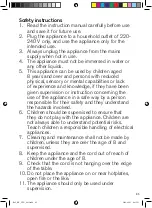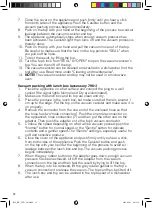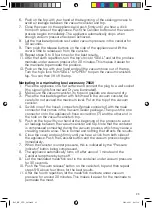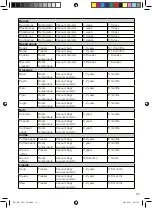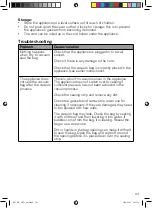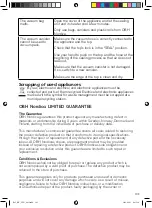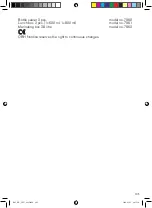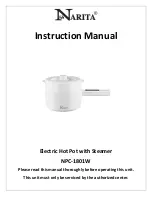
Leafy vegetables:
For the best results, a vacuum canister should be used for vacuum packing of
leafy vegetables. Rinse the vegetables and let them dry on a paper towel or the
like. Then vacuum pack them in a vacuum canister and store in the refrigerator.
Fruit:
Fruit with a peel should be peeled before being vacuum packed. Feel free
to pre-freeze fruit for 1-2 hours before being vacuum packed. Spread them
out on a piece of baking paper or the like so they do not freeze together in a
clump. Then vacuum pack them in a vacuum bag and place in the freezer. If
you want to keep them in the refrigerator, you should vacuum pack them in a
vacuum canister.
Baked goods:
If you want to vacuum pack soft baked goods, you are recommended to use
a vacuum canister to preserve their form. If you want to use a vacuum bag,
however, you should pre-freeze the baked goods for 1-2 hours before hand. Of
course, pastry dough, pies and cake mixes can be vacuum packed for later use.
Hard cheese:
To keep cheese fresh, vacuum pack it if you are not going to use it for a few
days. Take an extra large vacuum bag so that you can re-use the bag if you
want to vacuum pack the same cheese again. Note! Soft cheese should not be
vacuum packed due to the risk of anaerobic bacteria.
Powder and flour:
To keep particles from entering the vacuum pump, a coffee filter or paper
towel should be placed between the contents in the vacuum bag and the bag
opening. Make sure that the filter/paper does not enter the seal. You can also
vacuum pack the contents in their original packaging by putting the original
package and its contents in a vacuum bag and then sealing the vacuum bag.
Snacks:
If you have left over snacks, they stay fresh longer if they are vacuum packed.
For the best results, a vacuum canister should be used when vacuum packing
to keep them from being crushed.
Liquids:
Before you vacuum pack a liquid, such as soup or broth, pre-freeze the liquid
in a freezer-resistant container or ice cube form until the liquid is completely
frozen. Then remove the frozen liquid from the form and vacuum pack it in a
vacuum bag or vacuum canister. Then place the vacuum bag/vacuum canister
in the freezer. Note that if liquid is vacuum packed directly in a vacuum canister
without being pre-frozen, the canister can be damaged and crack when it is in
the freezer.
97
7945_KK_UVN_0415.indd 97
2016-06-23 09:15:34
Summary of Contents for Chef
Page 1: ...7945_KK_UVN_0415 indd 1 2016 06 23 09 15 24...
Page 3: ...3 7945_KK_UVN_0415 indd 3 2016 06 23 09 15 27...
Page 106: ...106 7945_KK_UVN_0415 indd 106 2016 06 23 09 15 34...
Page 107: ...107 7945_KK_UVN_0415 indd 107 2016 06 23 09 15 34...
Page 108: ...SE UL 7945 UVN 230616 7945_KK_UVN_0415 indd 108 2016 06 23 09 15 37...



